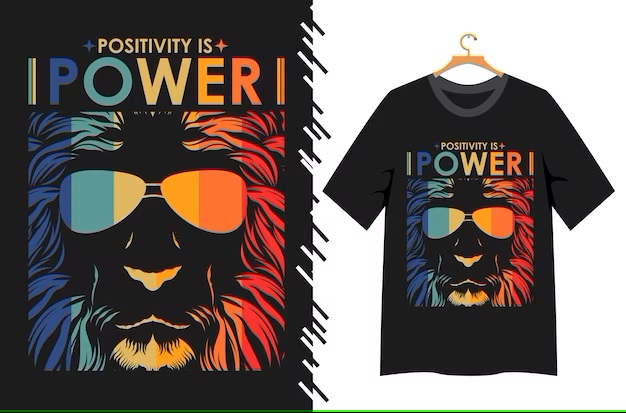Print-on-demand (POD) services have emerged in recent years, completely altering the landscape of the online custom product market. Entrepreneurs and artists can now turn their designs into real goods, such as t-shirts, hoodies, mugs, and phone cases, without keeping inventory or paying for pricey equipment. However, a lack of graphic design abilities may dissuade many would-be merchants. Don’t worry! Even if you don’t consider yourself a graphic designer, you can use this blog’s information to produce beautiful print-on-demand designs.
Understanding Your Target Audience And Niche
Before you begin any design process, you must determine your intended audience and pick a specialty. It helps you learn the tastes and preferences of your potential clientele. Consider who your things might appeal to the most. What are their age groups? What are their interests, hobbies, and professions? Are minimalist designs more appealing to them, or do they favor flamboyant, attention-grabbing ones?
To gather this information, research, use demographic data, run surveys, or communicate with potential customers on social media channels. With this knowledge, you may build designs that cater to their specific interests and inclinations, increasing the likelihood that your plans will appeal to them.
Choose The Right Print-On-Demand Platform
Choosing the best print-on-demand platform can significantly impact your design and selling processes. There are a variety of platforms accessible, each with its own set of features, product offerings, printing quality, and pricing. Swagify.com is one of the most popular platforms with significant customization choices, a large selection of products to print on, and seamless integrations with prominent e-commerce platforms like Shopify and WooCommerce.
Consider print quality, convenience of use, pricing, product range, and shipping choices when selecting a platform. Some platforms, for example, may provide reduced prices but sacrifice print quality. Take the time to examine and contrast the features to ensure you select the ideal one for your needs.
Embrace Simple Design Principles
Print-on-demand design may only necessitate the use of expert graphic design abilities. Simple design concepts assist you in creating visually appealing and functional designs. First and foremost, strive for simplicity and clarity. Designs that are overly intricate or cluttered can be confusing and may not print effectively. Stick to a few crucial features and ensure your design delivers its intended message effectively.
Balance and contrast are essential considerations when selecting colors. Use a color wheel to assist you select complementary colors, and prevent using too many colors in one design. Another critical part of the design is font selection. Check that your writing is legible and complements the overall design. Different typefaces transmit different moods, so select one that corresponds to your design’s message or topic.
Leverage Online Design Tools
You don’t need to be a Photoshop pro to produce print-on-demand designs. There are several online tools available that make the design process simple and enjoyable, even for non-designers. For example, Canva provides many templates, fonts, and design elements to drag and drop into your designs. Canva’s user-friendly interface allows you to create professional-looking designs without prior graphic design experience.
Utilize Mockup Generators
Visualizing your designs on actual products before putting them on the market can save you a lot of time and trouble. You can use mockup generators to check how your designs look on various items. It allows you to fine-tune your design elements’ sizes, colors, and placement to ensure they fit correctly and look well on the completed project.
Embrace The Power Of Free Stock Resources
Creators frequently use images, illustrations, and other visual elements to craft print-on-demand designs. These elements abound in free stock resources like Unsplash and Pixabay, offering millions of high-quality pictures and graphics for commercial use. As a result, designers can use them in their creations without fear of violation.
However, always check the licensing agreement of each image before using it. Some photos may need attribution or have other restrictions on their use. Furthermore, although stock pictures can save time and money, you should not rely exclusively on them. Infuse your designs with your creative spin to make them stand out and feel more personal.
Incorporate Trending Themes
Incorporating popular themes into your designs will help you attract more customers and increase your sales. Monitor what’s trending on social media, design blogs, fashion, and pop culture. It could include everything from popular colors to patterns, words, or memes. POD marketplaces frequently feature popular or best-selling designs, which might serve as inspiration.
Collaborate With Freelance Designers
Cooperating with freelance designers can bring your creative ideas to life even if you are not a competent graphic designer. This method can save you time while ensuring your final design is polished and professional. It is critical to explain your thoughts adequately while working with a freelancer. Give them as much information as possible about your ideas, such as your target demographic, preferred color schemes, style, and any unique aspects you want to incorporate.
Iterate And Seek Feedback
Creating excellent designs all the time entails a trial and error-process. Keep going even if your first designs fall flat. Use these situations as learning opportunities, and improve depending on feedback. Customers, friends, relatives, and internet groups can all provide comments. Social media sites can also help gather feedback and engage your target audience. You may conduct polls or surveys to obtain feedback on potential design concepts.
Remember that tastes and trends vary over time, so being adaptive and open to new ideas is essential. Constantly improving your designs and experimenting with new ideas will help you stay relevant and appeal to a broader range of clients.
Stay Compliant With Copyright And Trademarks
Verifying that you are not infringing on anyone’s copyright or trademarks when producing your designs is critical. It applies to all design elements, including photos, text, logos, and color combinations. If you use internet resources, be sure they are royalty-free or that you have the proper licenses to use them. Websites such as Creative Commons can be a good source of legally useable free content.
Conclusion
With the explosion of print-on-demand services and readily available design tools, turning your creative ideas into sellable products has always been challenging. Remember to understand your target audience, use user-friendly design tools to produce eye-catching designs, and remain current with trends. Combine your passion with helpful hints, and you’ll be well on your way to launching a successful print-on-demand business, even if you’re not a graphic designer. So, why bother? Begin designing and letting your imagination run wild to dominate the world of print-on-demand!





Be First to Comment